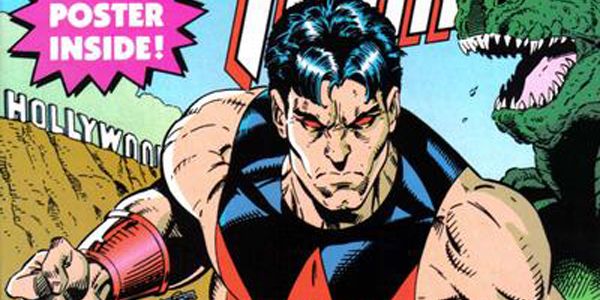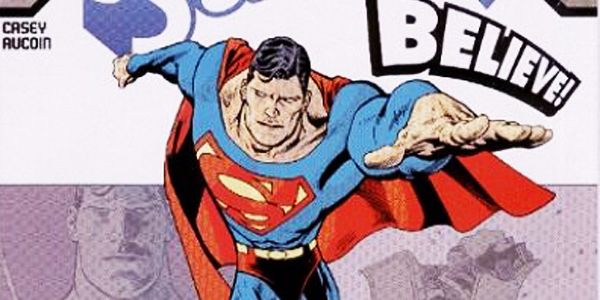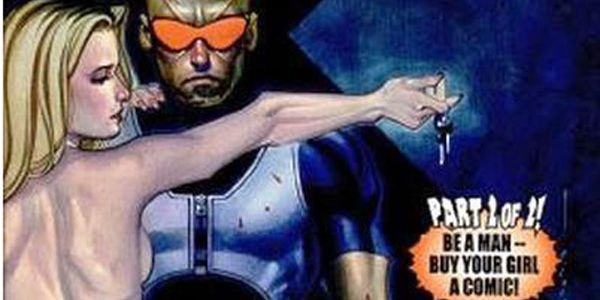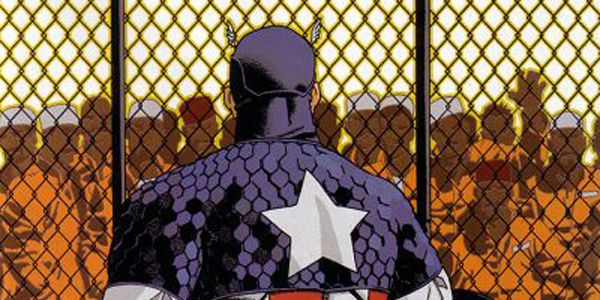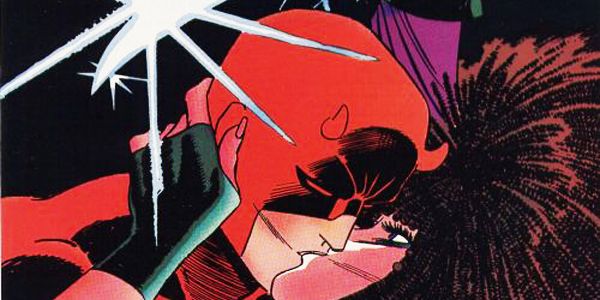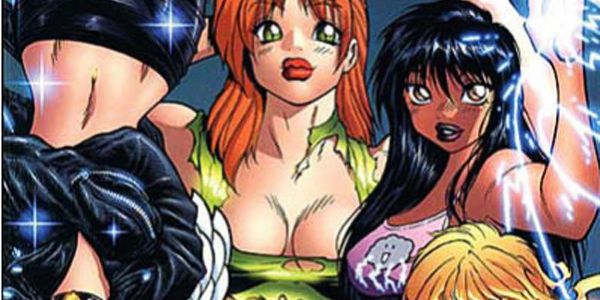New comics come out every week, by the dozens. Add that up by the month or the year, and it's virtually impossible to keep track. Certain runs on some titles rise to the top by a mixture of critical acclaim, proper marketing and the right timing, but if all of those factors aren't perfectly aligned, good comics fall by the wayside.
In this edition of ROBOT 6's "Six by 6," we look at six noteworthy creative runs on superhero comics worth a second look, even if that means a trip to the back-issue bin.
Wonder Man (1991-1994) by Gerard Jones, Jeff Johnson, et al. (Marvel)
Superhero/movie star, what's not to love? Years before Marvel had a Hollywood hit, the red-eyed Simon Williams was king of the film world in the company's fictional universe, balancing a string of starring roles in hit movies with a membership in various Avengers teams. At the peak of the 1990s speculator comics bubble, Gerard Jones teamed with the amazing Jeff Johnson to tell the story of a celebrity superhero dealing with fans who want to be sidekicks and villains out to make a name by beating the celluloid star. Jones and Johnson showed Wonder Man full of self-doubt but also with moments of boldness, fighting foes like Goliath, the Kree, the Sh'iar, Mephisto, and his brother the Grim Reaper. Jones wrote all 29 issues of the series, while Johnson was the regular artist until departing in Issue 25. Sadl,y this series was never collected nor is it available digitally, but can easily be had through the second-hand market; the entire run was recently listed on eBay for just $17.50.
Adventures of Superman (2001-2004) by Joe Casey, Derec Aucoin, Mike Wieringo, et al. (DC Comics)
Years before works like Godland and even Wildcats, Joe Casey spent three years with DC's Man of Steel.The pinnacle of his 36-issue run is "The Hollow Men" storyline from issues 612-616, showing Clark Kent catching up with his teenage mentor in journalism after discovering those stories of his coming to life. The writer used that to compare and contrast the modern idea of Superman with that of the original, early depiction of the Man of Steel, to awesome effect. Casey's run has been pigeonholed as showing a "pacifist" Superman because of his push to solve problems without violence, but this story doesn't pull any punches.
Agent X (2003) by Evan Dorkin and Juan Bobillo (Marvel)
While this may not have been Deadpool in name, it was Deadpool in action. And after the original creative team left, someone with some excellent tastes and a sense of boldness thought up the great idea to hire Milk & Cheese's Evan Dorkin to script a two-issue tale. Paired with the great comedic superhero talents of artist Juan Bobillo, Dorkin takes Agent X on a tour of bad taste, gratuitious violence and dark humor -- and introduces a homage to the excess of the 1990s in Fight-Man.
Captain America (2004) by Robert Morales, Chris Bachalo and Eddie Campbell (Marvel)
I loved Truth: Red, White & Black; it was controversial, yes, but also a really well-written and thought-out book. So when news came out that its writer, Robert Morales, was partnering with Chris Bachalo for Captain America himself, I was psyched. I loved their "Homeland" arc, but found myself among the few as it delved into political turmoil and critiques on fine art; right up my alley, but apparently not the Captain America the world wanted at the time. Morales' extended run was cut short, but Marvel hired the excellent Eddie Campbell for Morales' last two issues -- well worth the price of admission on its own.
Daredevil (1986-1991) by Ann Nocenti, Barry Windsor-Smith, John Romita Jr., et al. (Marvel)
The worst part of making a character famous with a specific style of story is trying to live up to that. Just ask anyone who's worked on Daredevil since Frank Miller. Swallowed up in that immense shadow is the run of editor-turned-writer Ann Nocenti, best known for introducing Typhoid Mary and Blackheart. However, beneath those star-making moments Nocenti and an all-star crew that included Barry Windsor-Smith, John Romita Jr. and Al Williamson saw Daredevil fighting crime in and out of costume, even venturing to Hell at one point. Nocenti used the title to engage in social issues of the time, even taking on the idea of patriotism as a negative in culture. Nocenti pushed the tagline of the series, "Man Without Fear," to full effect, showing Murdock as somewhat of a risk-taker, sometimes to his own detriment.
Gen13 (2002-2003) by Adam Warren, et al. (DC/Wildstorm)
OK, this little run is the impetus for this entire feature, so bear with me. Warren is best known for his own work on Dirty Pair and Empowered, but sandwiched between those two projects is a run that begged for further attention: DC/Wildstorm's Gen13, which Warren transformed into the quintessential superhero teen book that it merely tried to be since its creation. In 18 issues, with the help of such artists as Kaare Andrews, Rick Mays and Ed Benes -- not to mention Warren himself -- the book became a knowingly self-referential Animal House of teen superhero drama. What Warren Ellis and Bryan Hitch did for the mainstream superhero team in The Authority, Warren was doing with the subset of teen superheroes in Gen13. He played up the sexualization of superheroes, but with a knowing voice and an acerbic, tongue-in-cheek patter.


